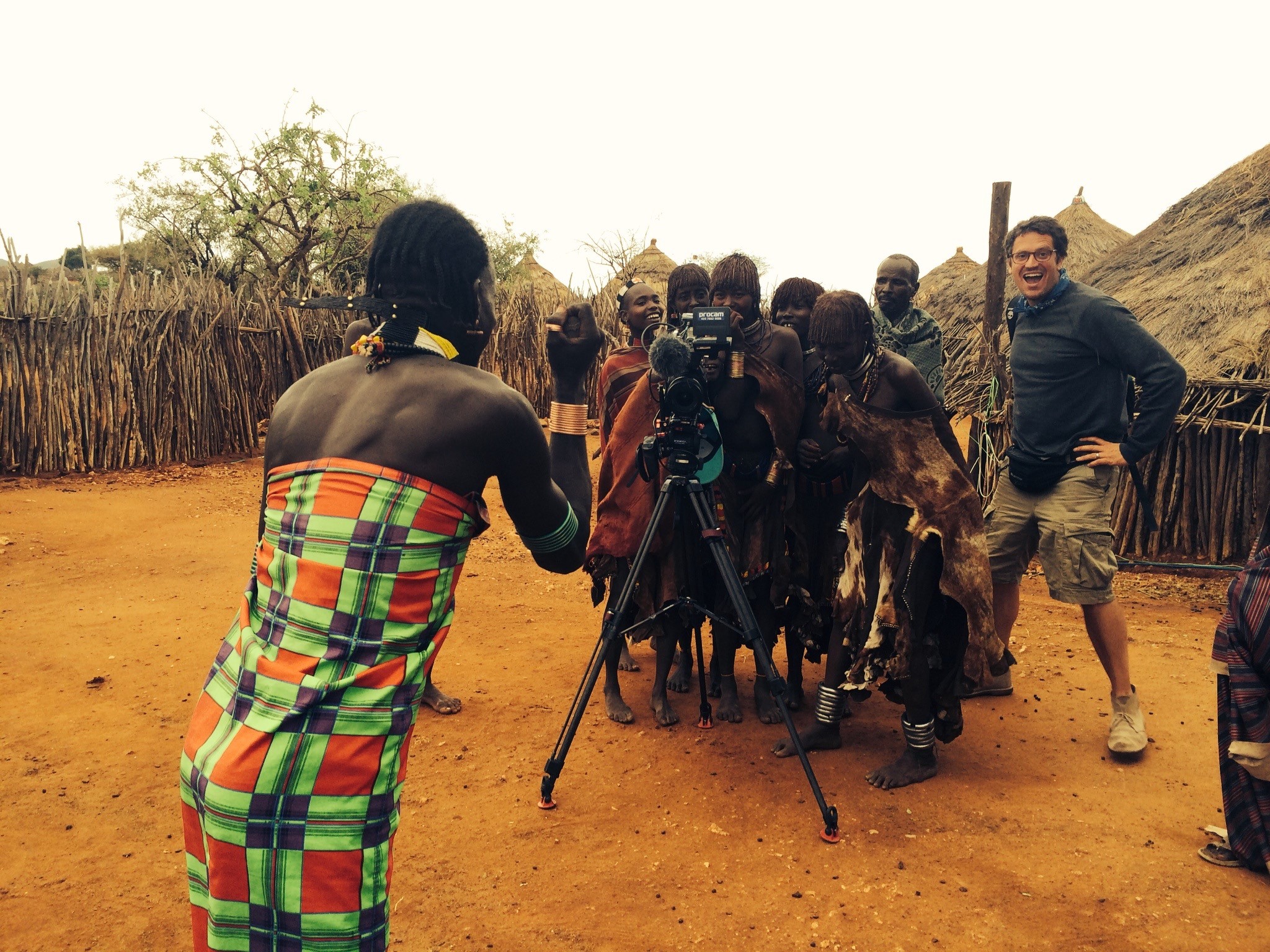My great African Adventure
With long days, floods and intense heat, C4’s first foreign fixed-rig series took me out of my comfort zone. But focusing on the basics of story-telling carried us through.
“Why the hell is he asking me? I’ve never done a rig. Maybe he’s called me by mistake.” Those were some of my thoughts when Channel 4 head of documentaries Nick Mirsky phoned to ask if I was interested in taking on the broadcaster’s first foreign rig series. It would be set in and around four mud huts belonging to a multi generational tribal family in southern Ethiopia.
I said ‘yes’ immediately. Maybe I should have considered the pros and cons first. I’ve mainly made single-camera, self-shot docs in the UK, and since having kids, I’ve barely ventured outside the M25. To travel 5,500 miles to make a foreign-language series was a bit of a leap.
I am used to working in a small team – basically me and an AP doubling up on sound. For this series I was going to need a 50-strong team of hotheads, wranglers, fixers, a facilities manager, translators and drivers.
On a shoot day, I normally sling a camera and a couple of radio mics into the boot of a hire care. To rig 22 camera positions into the family homestead and position our gallery 100 metres away, we needed more than 5km of copper cabling alone. We couldn’t ship the kit, so all 72 boxes had to come on the flight with us.

For unit manager Ben Hoffman, the biggest worry was getting the equipment from Addis Ababa down the bumpy roads of the Omo valley in one piece.
We timed the shoot to coincide with southern Ethiopia’s dry season and a busy times in the family’s life: an initiation ceremony, the beginning of a school term, and a new bride coming to the village. On arrival, we got the warmest of greetings from family elder Ayke Myko, his two wives Kerri Bodo and Kerri Suma, their nine children and 16 grandkids.
Ben’s team set about unloading our kit but as soon as they had pitched our gallery tent, the heaven opened and a storm of biblical proportions fell on us. It lasted a week.
Through it all, the team performed heroics: digging trenches, laying cables, rigging cameras. But the rain threatened to scupper us. Away from the village, our campsite was flooded and some of our tents were swept away; in the village, our gallery tent was almost washed down the side of a hill. There was an upside. Elder Ayke Muko believed we had brought the unseasonal rain with us and reckoned it would do wonders for their next crop of sorghum.
Eleven hours a day for 26 days, we continuously recorded village life onto three streams from our pick of twenty cameras. It’s difficult to know who to film at any one time when you don’t have the faintest idea of what anyone is saying. So our fixer Zab handpicked a group of local tour guides, some of whom had grown up in tribal families like the one we were filming. Their cultural and linguistic knowledge was invaluable.

Each day, one of them would sit alongside me, gallery director Carrie and AP/logger Claire and shout out was being said. Our growing relationship with these men, both in Ethiopia and back in London (where they forensically translated scene after scene) has been one of the many rewarding aspects of the series.
Big shoots are relentless. A 4am call time was routine so we could being filming at first light, and we often did split shifts to profit from the busiest times of the day in the homestead: early morning and early evening. Occasionally I opted to shoot through the hottest part of the day because I anticipated something dramatic and interesting would happen. When the dramatic and interesting thing didn’t happen, which was often, this meant toiling through 42 degree heat filming matriarch Kerri Bodo as she embarked on yet another painstaking hunt for a lost calabash. One afternoon, I saw hothead operator Jim Field had gaffer-taped his eyelids open in a bid to stay conscious.
One of the most gratifying aspect was doing the master interviews with each family member. We devised a method of getting a simultaneous translation of their answers into my ear to make the interviews feel alive and spontaneous. The one limitation was that we had to stop at 5pm every evening when a colony of bats would wake up and start screeching.

I now know I was right to give Nick an immediate ‘yes’. Single camera or twenty, the basic story-telling principles of character and narrative endure. Thanks to the extraordinary Ayke Muko family and a happy, hardworking team, it’s been my greatest adventure in twenty years of making television.
-----
 The Tribe is nominated for Best Entertaining Documentary and Best Documentary Series at The Grierson Awards 2016.
The Tribe is nominated for Best Entertaining Documentary and Best Documentary Series at The Grierson Awards 2016.
Paddy Wivell for Renegade Pictures; first shown: Channel 4
